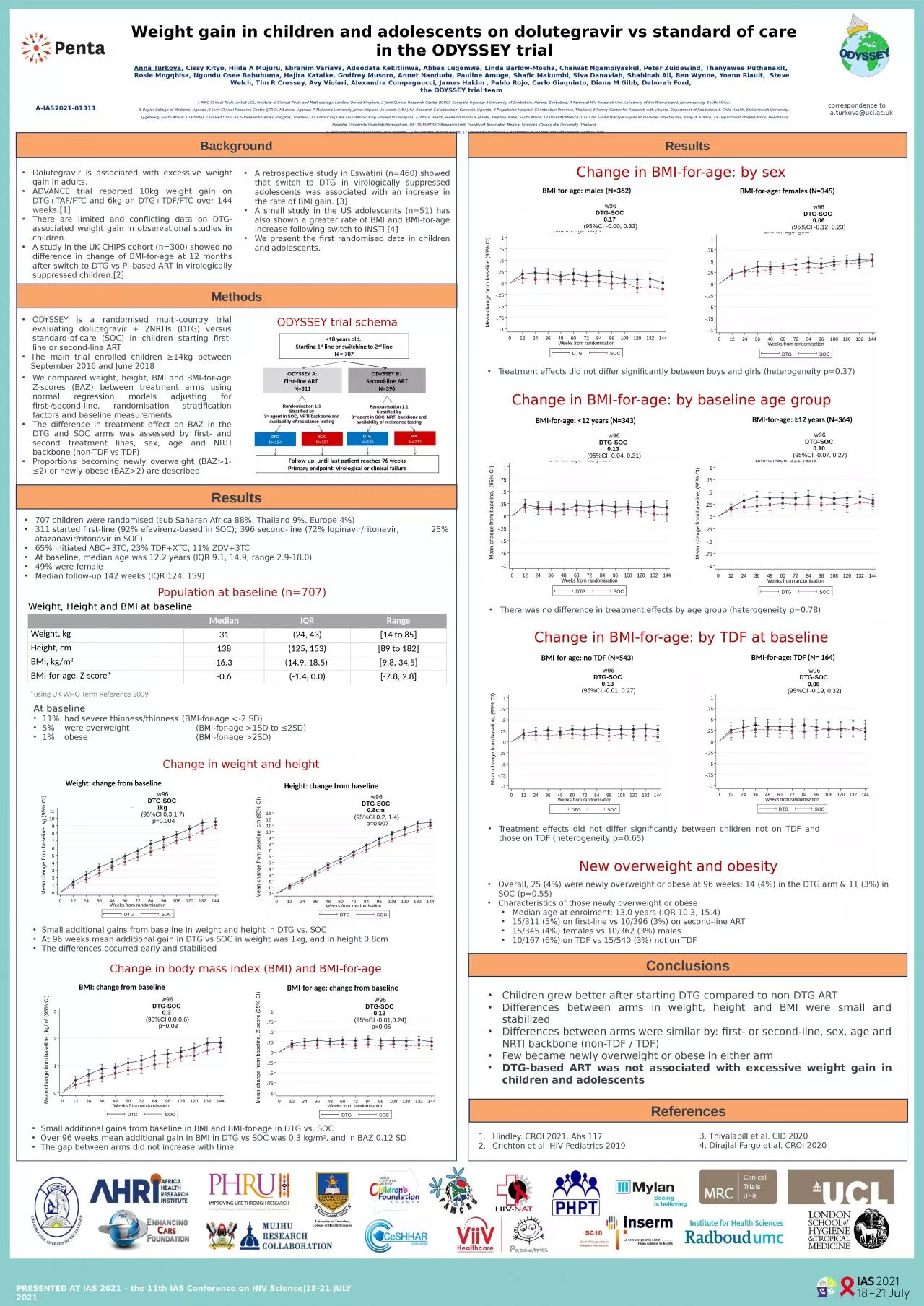PPT-PRESENTED AT IAS 2021 – the 11th IAS Conference on HIV Science
Author : bency | Published Date : 2024-02-02
1821 JULY 2021 Weight gain in children and adolescents on dolutegravir vs standard of care in the ODYSSEY trial 1 MRC Clinical Trials Unit at UCL Institute of Clinical
Presentation Embed Code
Download Presentation
Download Presentation The PPT/PDF document "PRESENTED AT IAS 2021 – the 11th IAS C..." is the property of its rightful owner. Permission is granted to download and print the materials on this website for personal, non-commercial use only, and to display it on your personal computer provided you do not modify the materials and that you retain all copyright notices contained in the materials. By downloading content from our website, you accept the terms of this agreement.
PRESENTED AT IAS 2021 – the 11th IAS Conference on HIV Science: Transcript
Download Rules Of Document
"PRESENTED AT IAS 2021 – the 11th IAS Conference on HIV Science"The content belongs to its owner. You may download and print it for personal use, without modification, and keep all copyright notices. By downloading, you agree to these terms.
Related Documents














